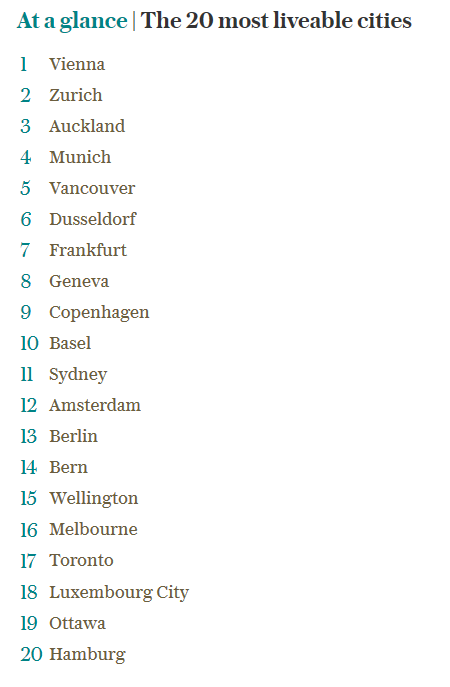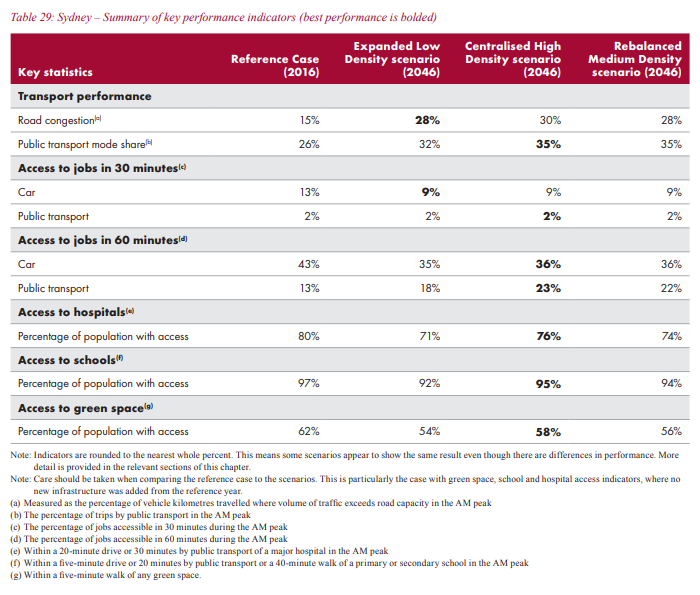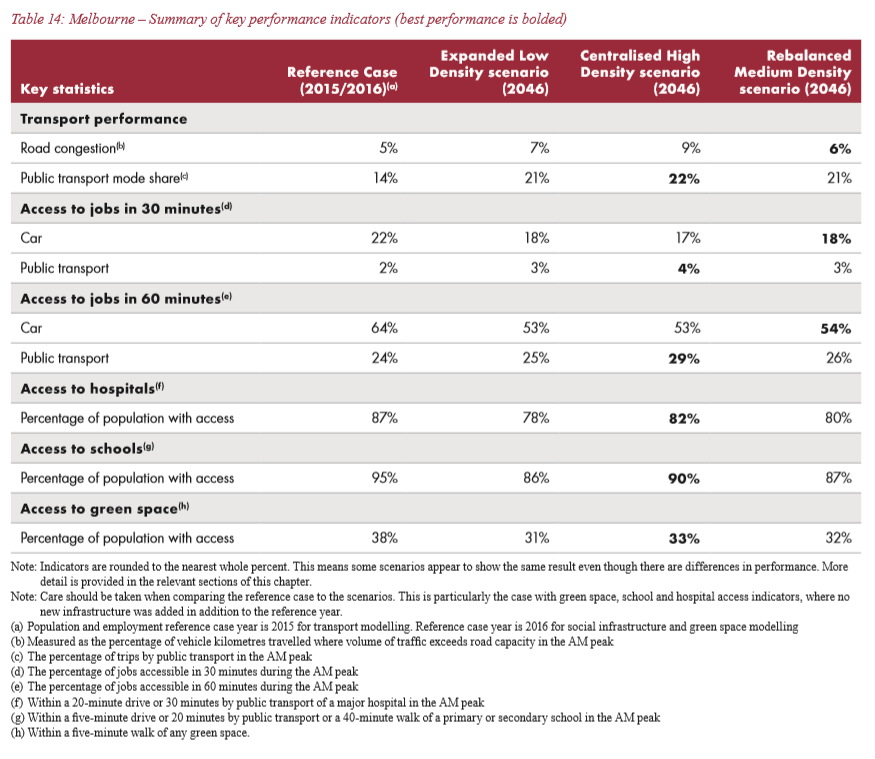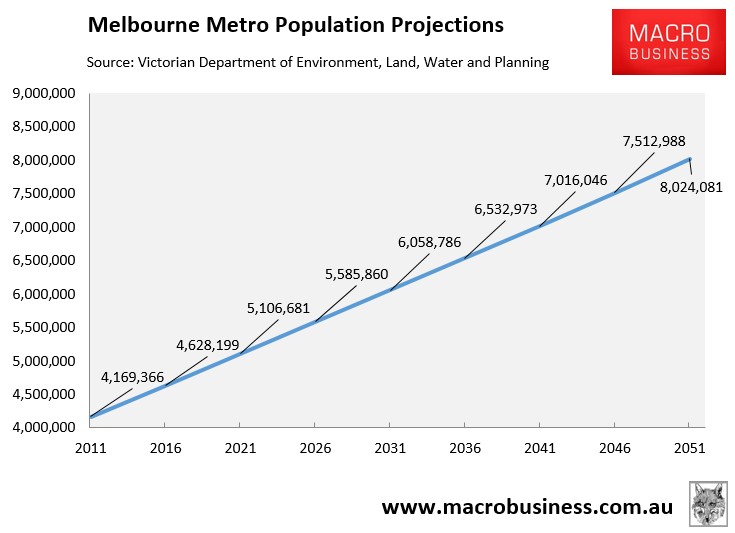After Melbourne yesterday lost its bogus title of “most liveable city”, Lord Mayor, Sally Capp, offered a rare dose of honesty on the primary reason why:
Calling Melbourne a “victim of its own success,” Mayor Capp said the city’s growth had made it harder to meet the liveability criteria.
“You have to remember Vienna has a population of about 1.8 million and our population is now 4.6 million,” she said.
“And when you start to compare with other major cities, London for example rates at 48 in this liveability index, so there are definitely challenges recognised within the index that makes it very hard for cities as they become bigger to be competitive in this particular criteria.”
Mayor Capp said there were a number of areas the city could improve including congestion and homelessness…
Vienna and Melbourne scored maximum points in the healthcare, education and infrastructure categories.
That Melbourne scored maximum points on infrastructure illustrates just how bogus The Economist’s ‘Most Liveable City’ rankings are. Also, Melbourne’s population is 4.9 million, not 4.6 million – quite a big difference.
It’s also worth pointing out again that Mercer’s Quality of Living Index ranked no Australian city in the top 10 of most liveable:

Moreover, only one of the top 10 cities (Munich) has a bigger population than Sydney (5.1 million) and Melbourne (4.9 million):
- Vienna: 2.6 million
- Zurich: 1.8 million
- Auckland: 1.7 million
- Munich: 6 million
- Vancouver: 2.5 million
- Dusseldorf: 1.2 million
- Frankfurt: 2.3 million
- Geneva: 1 million
- Copenhagen: 2 million
- Basel: 550,000
So Sally Capp’s general point about large populations being incompatible with high quality of life is correct.
Infrastructure Australia’s recent projections around Sydney and Melbourne also show that both cities’ liveability will be crushed as their populations surge to 7.4 million and 7.3 million people respectively by 2046, with worse traffic congestion and reduced access to jobs, schools, hospitals and green space under every build-out scenario:


With this in mind, it’s hard to fathom why Capp remains a card carrying supporter of a ‘Big Australia’ and a Melbourne of 8 million-plus people.
In June, Capp confirmed that she’s still acting as the Victorian executive director of the Property Council of Australia with the following:
…new Lord Mayor Sally Capp… told the Herald Sun that there was no question about Melbourne having growth.
“We are having growth, so we all now have the responsibility to decide is that going to be good growth or bad growth,” she said.
“(Housing) density is actually a good thing for our future.”
This followed Capp’s attack on those opposing more intense development:
“There are still a lot of NIMBYs (not in my backyard) and we need more YIMBYs (yes in my backyard)”..
As well as her support for mass immigration:
[Capp] said her work over the last 18 months heading the Property Council – which describes its work as “championing a thriving property industry”…
“With huge population growth, if we get organised and plan, we can turn population from a challenge into an opportunity”…
That said, Capp’s not alone in the hypocrisy stakes.
Over the weekend, City of Melbourne’s planning chairman, Nick Reece, argued Australia’s high immigration and booming population was raising living standards:
Politicians stoking malcontent, shock jocks firing up audiences, their message is simple: if you want to fix traffic congestion, crowded trains, housing affordability, inappropriate development, even African youth gangs, then just pull the handbrake on immigration.
Rarely have the rabble-rousers got it so wrong…
The clear and present danger is that our political leaders lose the social licence to maintain the mass immigration scheme that has been fundamental to our success as a nation…
A bigger Australia can be better. A bigger Melbourne can be better…
And yet only last month Reece decried the loss of Melbourne’s amenity:
They are some of Melbourne’s biggest design eyesores: buildings that shot up over the past decade, during the central city’s biggest ever construction boom.
That boom coincided with successive planning ministers loosening regulations, allowing developers to build many urban spaces the city council says simply don’t work.
“We have let too much crap be built,” Melbourne City Council’s planning chair Nick Reece says…
“We want to see more buildings that give back to the public realm,” says Cr Reece, who argues that while Melbourne is by far Australia’s most attractive and interesting city, it has been degraded by recent bad architecture and design…
“We are seeing low-quality design outcomes”…
Blind Freddy, but not Nick Reece, can see that the key driver behind the proliferation of ugly high-rises across Melbourne is force-fed immigration, which has driven an insane 1.2 million (33%) increase in the city’s population over the past 13 years to 4.9 million people currently:

And is projected to expand Melbourne’s population to more than 8 million people mid-century:
Obviously, if you are going to add 100,000 people to Melbourne every year, then you will need a lot of buildings and fast. All these millions of extra people inundating Melbourne will need somewhere to live. And this will necessarily involve a combination of further urban sprawl, increased density through high-rises, overall smaller and more expensive housing, as well as increased congestion.
Both Capp and Reece need to face the fact that it is the mass immigration ‘Big Australia’ policy that they support that is primarily responsible for the over-development across Melbourne and the loss of liveability.


